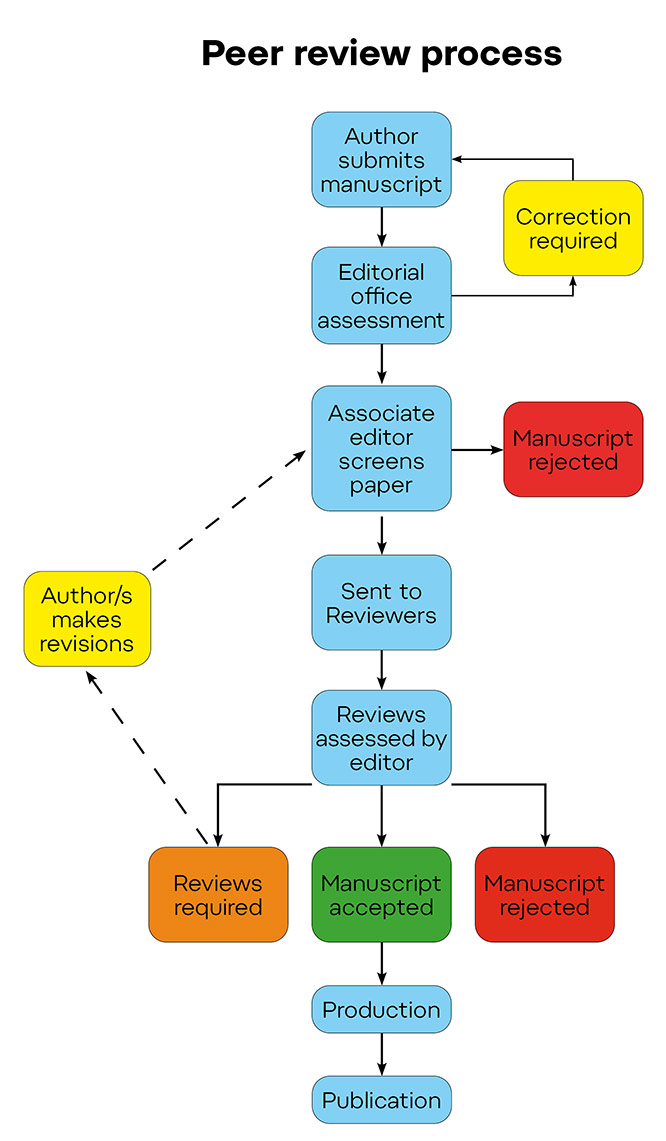Submissions, Review Process, and Publication
Submission
We accept new submissions only through our online content management system. You can fill in your registration in the tab Registration in the upper menu.
For successful submission, the Author(s) must upload three files:
- Cover Letter - including the names and full affiliations of all authors. Template for a Cover Letter is available here.
- Manuscript (.doc) - in editable format (.doc, .docx).
- Manuscript (.pdf) - complete with all figures and tables - in .pdf format.
Review Process
The review process in our journal usually takes 7 months.
All papers submitted to our journal are scanned by Crossref Similarity Check.
We are using single-blind peer review, which means the reviewers know the names of the Authors, but the Authors do not know who reviewed their manuscript unless the reviewer chooses to sign their report. In the rare, exceptional, occasions when two independent peer reviewers cannot be secured, the Editor may act as a second reviewer or make a decision using only one report.
Papers that do not meet the requirements of an original scientific research paper (or review) or do not meet the thematic focus of the journal will not be accepted.
Peer-review process stage by stage:
1. Manuscript submission – the Corresponding Author submits the manuscript to the journal via our online editorial system.
2. Editorial office assessment – the manuscript is checked against the Instructions for Authors and screened for plagiarism in the CrossRef Similarity Check tool. Manuscript can be sent back to authors for corrections or changes needed to avoid possible plagiarism. We are usually sending back manuscripts with more than 20% similarity with other, already published texts.
3. Associate Editor assignment - based on the topic of the manuscript, Technical Editor assigns Associate Editor (AS).
4. Associate Editor screening – AS checks whether the manuscript is suitable for the journal and is adequately original and interesting for a broader audience. If not, the manuscript may be rejected on an editorial basis without reviews.
5. Approaching of the Reviewers – AS invites at least two reviewers for the evaluation of the manuscript. If approached Reviewers donīt accept reviewing manuscript, further invitations are issued - until at least two acceptances are obtained.
6. Review is conducted – the Reviewer sets time aside to read the manuscript several times. The first read is used to form an initial impression of the work. If major problems are found at this stage, the Reviewer may feel comfortable rejecting the manuscript without further work. Otherwise, they will read the manuscript several more times, taking notes so as to build a detailed point-by-point review. The review is then submitted to the journal, with a recommendation to accept (without change, minor revisions, major revisions, and second review) or reject it.
7. Associate Editor makes the decision based on reviews – AS reads delivered reviews and make an overall decision about the manuscript. If the reviews differ widely, the AS usually invites an additional reviewer to get another before making a decision. After AS decides if manuscript will be accepted, send to the Author(s) for some corrections (minor or major) or rejected.
8. Decision is communicated - AS sends a decision e-mail to the Corresponding Author including any relevant comments.
9. Further steps - if accepted, the manuscript is sent to production. If the article is rejected or sent back for either major or minor revision, comments from the reviewers are attached, to help the Author(s) improve the paper. If the paper was sent back to the Author(s) for revision, the Reviewers should expect to receive a new version, unless they havenīt said they donīt need to see the manuscript again. In case when only minor changes were requested, AS can accept the manuscript without sending it to Reviewers again.

Publication
The submitted articles are worked on before the production process and the content is also arranged with the best typography standards and the tables and figures are arranged properly for printing.
Before publication, the Author will receive a print-ready pdf version of his paper for proofreading. At this time no further content changes in the text or appendices can be accepted.


